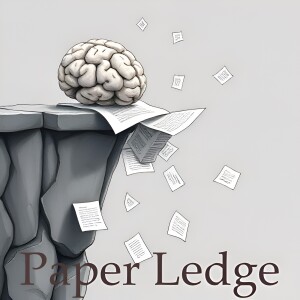

Computer Vision - TAMMs Temporal-Aware Multimodal Model for Satellite Image Change Understanding and Forecasting
Alright learning crew, get ready to have your minds blown! Today on PaperLedge, we're diving into some seriously cool tech that's helping us understand our planet better, thanks to the power of AI and satellite images. We're talking about a new approach to analyzing how things change on Earth over time, all seen from space.
Think about it: we've got satellites constantly snapping pictures of everything from deforestation in the Amazon to urban sprawl in our cities. But making sense of all those images, especially how things change over time, is a massive challenge. It's like trying to watch a movie with a million different plots happening at once! And that’s where this research comes in.
The researchers focused on a really interesting problem: can we teach AI to not only see the changes happening in satellite images, but also to predict what those images will look like in the future? Imagine being able to forecast how a coastline will erode or how a forest fire will spread, just by looking at satellite data!
Now, before you glaze over with tech jargon, let's break down how they did it. They built what they call TAMMs – a Temporal-Aware Multimodal Model. That's a mouthful, but the key words are "temporal" (meaning time) and "multimodal" (meaning using different types of information). Think of it like this: TAMMs is like a super-smart detective that can piece together clues from different sources (satellite images) to understand a timeline of events (how things change over time).
These TAMMs are build on top of existing large language models, or MLLMs. You've probably heard of these – they're the brains behind a lot of AI systems. But standard MLLMs aren't great at spatial-temporal reasoning, which is understanding changes in space and time. To fix this, the researchers gave their TAMMs some special training focused on recognizing patterns and sequences in satellite images. It's like giving the detective a magnifying glass and a timeline to help them solve the case.
One of the coolest parts of TAMMs is how it makes predictions. They use something called Semantic-Fused Control Injection (SFCI). Okay, another mouthful! Basically, it's a way to combine the AI's high-level understanding of the meaning of the image (like, "this is a forest") with its understanding of the structure of the image (like, "these are trees arranged in a certain way"). This helps the AI generate future images that are both realistic and make sense in the context of what's happening.
Think of it like this: if you asked an AI to draw a picture of a city after a hurricane, you wouldn't want it to just randomly scatter buildings around. You'd want it to understand that a hurricane causes damage and destruction, and then to draw a picture that reflects that understanding. That's what SFCI helps TAMMs do – create future images that are not only visually accurate, but also semantically consistent with the changes that are happening.
"This dual-path conditioning enables temporally consistent and semantically grounded image synthesis."
So, what does all this mean? The researchers showed that TAMMs can outperform other AI models in both understanding changes in satellite images and predicting what those images will look like in the future. This is a big deal because it opens up a whole new world of possibilities for using AI to monitor our planet and make better decisions about how to manage its resources.
But here's where it gets really interesting for you, the learning crew. This research has implications for:
- Environmental scientists: Imagine being able to more accurately track deforestation, monitor the melting of glaciers, or predict the spread of wildfires.
- Urban planners: This technology could help us better understand how cities are growing and changing, and plan for the future.
- Farmers: Imagine predicting crop yields based on satellite data and making better decisions about irrigation and fertilization.
- Really, anyone interested in understanding our planet!
And it raises some fascinating questions:
- How can we ensure that these AI models are used responsibly and ethically, especially when making predictions about the future?
- Could this technology be used to monitor human activity and potentially infringe on privacy?
- How can we make this technology more accessible to researchers and practitioners around the world?
This paper isn't just about cool AI tricks; it's about using technology to understand our planet and make better decisions about its future. And that, my friends, is something we can all get excited about.
Credit to Paper authors: Zhongbin Guo, Yuhao Wang, Ping Jian, Xinyue Chen, Wei Peng, Ertai E
More Episodes
All Episodes>>Create Your Podcast In Minutes
- Full-featured podcast site
- Unlimited storage and bandwidth
- Comprehensive podcast stats
- Distribute to Apple Podcasts, Spotify, and more
- Make money with your podcast












